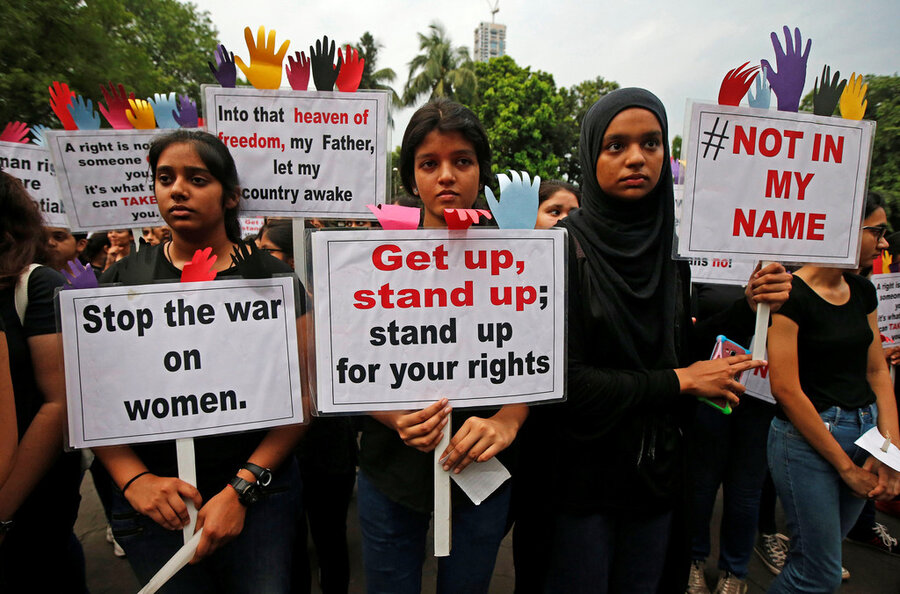India’s swing in favor of girls
Loading...
A string of protests has erupted in India over recent days – in the streets, on social media, and, notably, among Bollywood actresses. The immediate focus is the rape and murder of an 8-year-old Muslim girl at a Hindu temple. The brutal crime has put a spotlight on religious divides and a weak response from politicians and the judicial system. But the protests also hint at a deeper cultural shift.
The size of the protests suggests a strong challenge to India’s historic fatalism about the role of girls and women as weak, submissive, or expendable. Rape remains a particular problem in India, even after mass protests in 2012 over an attack on a young woman in Delhi. Reported rapes of minors have more than doubled between 2012 and 2016. And the killing of female fetuses remains an issue. A recent government report called for a “collective self-reflection” on the country’s family preference for sons.
Yet India has also had several successes for girls and women that may account for the confidence to demand more. One recent success stands out. According to a United Nations report last month, the annual number of child marriages in India has fallen by nearly half in the past decade.
The drop has been so dramatic that it helped result in a global reduction of 25 million fewer marriages than would have been anticipated 10 years ago. And it has forced India to assess which of its many approaches against child marriage is working.
Progress has been uneven in India’s diverse states. And many experts say the statistics may not be totally accurate. Despite laws against child marriage, especially one enacted in 2006, many families find ways to hide the event and avoid reporting it. Laws go only so far in breaking a practice rooted in what many Indians see as an economic necessity in marrying off a young girl and a need to avoid damaging family honor if she is raped or molested.
One tactic that has worked in many places is to give money to a family if it keeps a girl in school. Another is the use of door-to-door awareness campaigns in which activists talk to families about the consequences of early marriage. Some activists also try to convince married girls to legally annul their marriage.
In a sign of shifting norms, India’s top court ruled last year that sex with an underage wife constituts rape. Success builds on success in India, a country that may now serve as a model for other countries, such as those in Africa, where the rate of child marriages remains too high.







